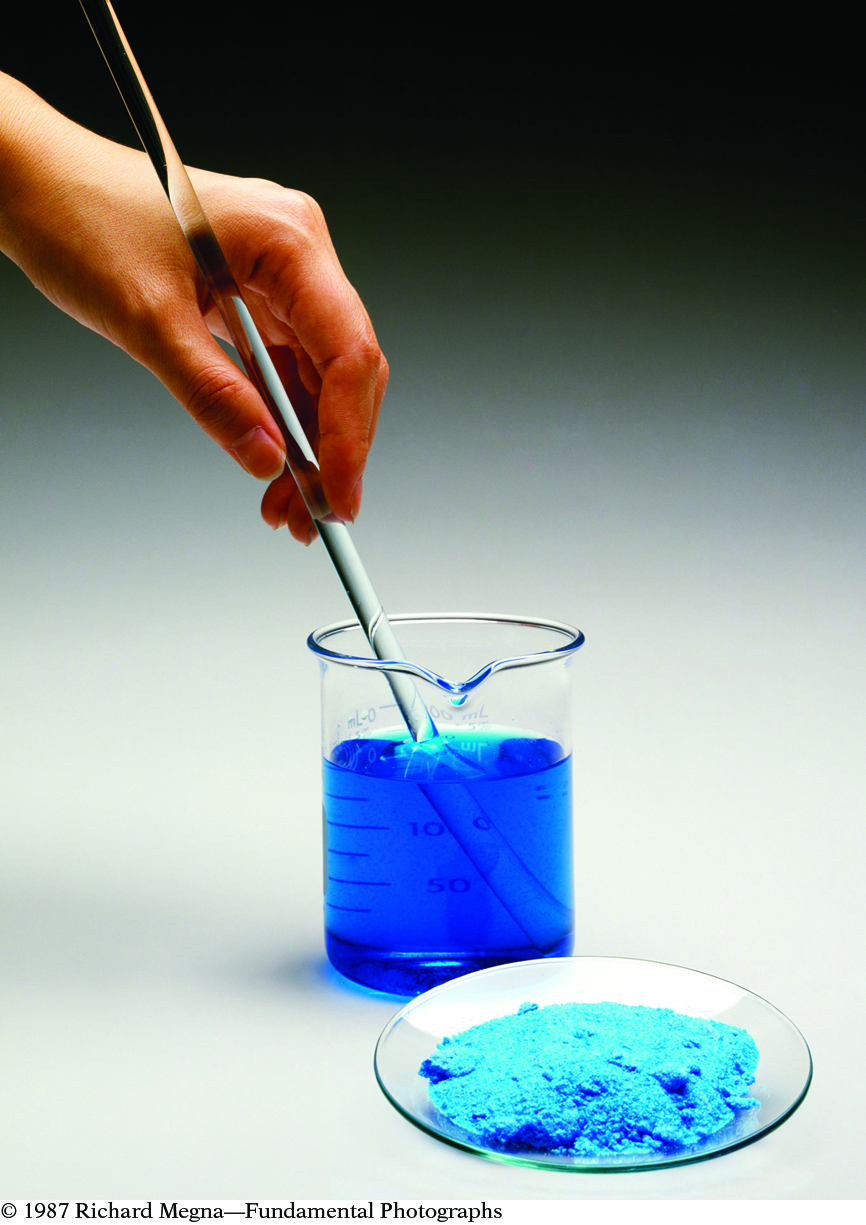LESSON 1: Tools of the Trade: Lab Equipment and Safety
THINK ABOUT IT
3
A chef depends on a wide variety of gadgets and kitchenware to create delicious meals—from whisks and mixers, to ovens and saucepans. An auto mechanic relies on a toolbox of wrenches. In every profession, it is important to have the right tool for the job. Chemists have their own special tools and equipment that allow them to study the world around them. They also have a set of guidelines for using the tools safely.
What tools and equipment do chemists use?
To answer this question, you will explore
The Tools Chemists Use
Laboratory Safety
The Tools Chemists Use
EXPLORING THE TOPIC
The Tools Chemists Use

Chemistry often brings to mind a laboratory filled with unusual glassware and bubbling beakers. Chemists depend on a variety of tools in their explorations. In particular, chemists need tools that allow them to measure the mass and volume of substances, mix them, heat and cool them, and observe and separate them. Take a moment to examine these illustrations to see some of the tools that are used for these purposes.

Tools for measuring volume: graduated cylinders, Erlenmeyer flask, burette attached to Erlenmeyer flask.
© 1992 Diane Hirsch—Fundamental Photographs
|

Tools for observing change: test-tube holder, test-tube rack, brush for cleaning.
Ken Karp Photography
|

Tools for mixing: stirring rod and beaker.
© 1987 Richard Megna—Fundamental Photographs
|
|
4 
Tools for separating: Funnel with filter paper, wash bottle, beaker.
Ken Karp Photography
|

Tools for heating: Hot plate with beaker, boiling chips, and stirring rod, a thermometer.
Ken Karp Photography
|

Tools for heating: Bunsen burner with striker, ring stand with utility clamp, and a triangle holding crucible.
© 1995 Richard Megna—Fundamental Photographs
|
Measuring accurate amounts is important to chemists. They weigh solids on electronic balances and measure volumes of liquids in special glassware. You might notice that many of the containers chemists use are made of glass. Glass is a material of choice because substances in a glass container are visible. Chemists use tempered glass containers, which can be heated over flames without shattering. Also, glass containers are relatively easy to clean and reuse. Finally, notice that chemists use ring stands and special clamps to keep glassware from toppling. Spills can be hazardous.
Laboratory Safety
Laboratory Safety

The chemistry laboratory is a place for discovery. However, as in any workplace that uses specialized equipment, safety is always important. There are many situations in a lab that can become dangerous. Before participating in any chemistry activities, you should familiarize yourself with the safety equipment in your lab.
Take a moment to examine these illustrations. What safety equipment and precautions do you notice?

Know the location of the safety equipment and how to use it. Immediately report any laboratory accident, however small, to your teacher.
Ken Karp Photography
|

Never taste or touch chemicals. Never touch hot glassware. If you get chemicals on you, rinse with plenty of water.
Ken Karp Photography
|
CONSUMER CONNECTION
CONSUMER
CONNECTION
Like labware, bakeware is often made of tempered glass so that it can withstand rapid temperature changes and high temperatures without shattering.

5
A few do’s and don’ts:
When working in a lab, dress appropriately. Roll up your sleeves, tie back long hair, and wear closed-toe shoes.
Be sure that you have read the instructions for the procedure carefully.
Double-check that you are using the correct chemicals.
Before you begin working with chemicals or glassware, put on safety goggles.
Before leaving the lab, clean your lab station and return equipment to its proper place.
Do not put chemicals back into the original bottle. Doing so might contaminate the chemicals in the bottle.
Your teacher will provide waste containers; never put chemicals or solutions down the drain unless instructed to do so by your teacher.
LESSON SUMMARY
LESSON SUMMARY
What tools and equipment do chemists use?
Chemists use their own specialized tools and equipment in the laboratory. These tools and equipment are designed to allow chemists to measure mass and volume, and to mix, heat, cool, observe, and separate substances. It is important to work safely and carefully. When working in a chemistry laboratory, always wear safety goggles. Always wear appropriate clothing and closed-toe shoes. Be prepared to know what to do in case of an accident.
Exercises
Reading Questions
Why are most chemistry containers made of glass?
Describe the appropriate clothing to wear in a chemistry lab.
Reason and Apply
List three things you should do before beginning any laboratory procedure.
Describe what you would do in the case of an accidental spill in class.
List three things you should do before leaving the laboratory.
What is a fire blanket used for? If necessary, do some research to find out.
What is a hood used for in the chemistry laboratory? If necessary, do some research to find out.
Why do chemists use clamps and ring stands?